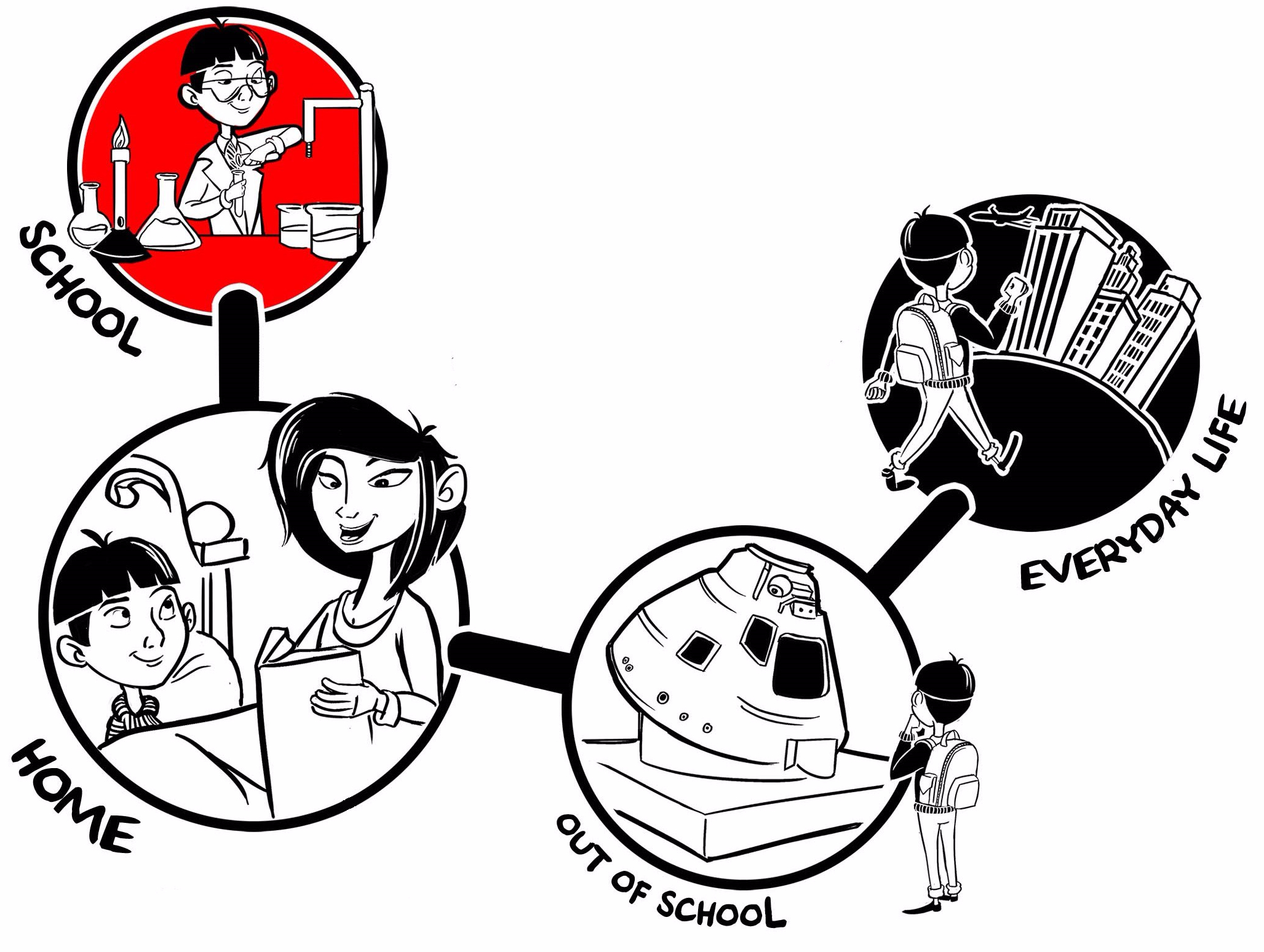The concept of science capital gives us an insight into why and how different people engage with and participate in science related experiences. It can help us to understand how we can make our science experiences as open and welcoming to as wide an audience as possible.
It brings together a wealth of research around effective science engagement and provides us with a shared framework which allows us to look critically at how we work every day to engage a broad and diverse audience with STEM.
 People experience and learn science in many different places, at school, at home and out in everyday life and no one place or experience can build a person’s science capital in isolation. But, the more that people will bump into positive ‘science’ experiences across the sector, and the more potential there will be for people to ‘grow’ their science capital.
People experience and learn science in many different places, at school, at home and out in everyday life and no one place or experience can build a person’s science capital in isolation. But, the more that people will bump into positive ‘science’ experiences across the sector, and the more potential there will be for people to ‘grow’ their science capital.
What can we do?
Every single aspect of a visit or experience is important in helping people to feel at home in our spaces, and to shape people’s feelings and relationship with science. From the welcome they receive to the signage they will see, from all the people they will meet to the places they go to eat, from the content and presentation, to the website and practical information. In whatever role we have, we all have the power to have a positive impact on our visitors engagement with STEM.
So how can we do that? It really comes down to the way that we think. Instead of focusing on filling the gaps in our visitors knowledge about science, we need to get to know our audiences and value what they bring to us. Every person that we want to reach has a rich range of life experiences, reference points and knowledge – but we need to consider that they may not be the same as yours.
The environments we create and the activities we organise need to reflect and value everyone’s perspectives, to give more people, more chances to recognise that science is something that is useful and that they can feel confident and excited to be part of – now and in the future.
So, if we reflect on and apply the science capital research to our work, together we can maximise the impact of informal science learning experiences – for everyone.